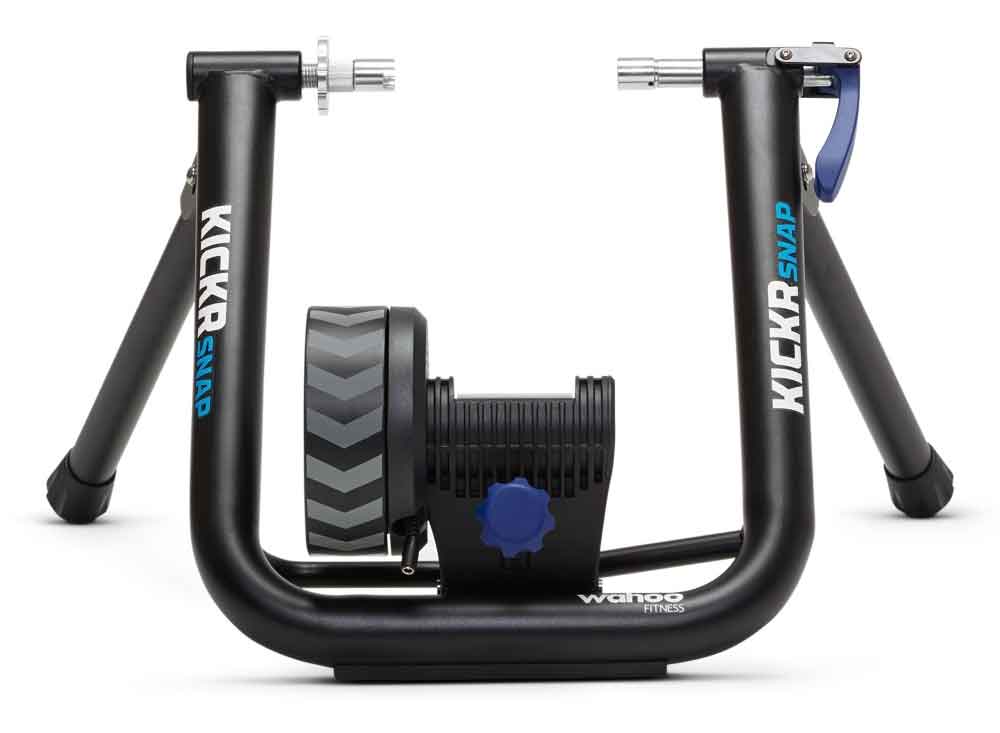[leadin]’The most realistic ride experience of any wheel-on bike trainer.’ We tested this claim on the KICKR SNAP, a $700 unit from Wahoo.[/leadin]

Wahoo makes some of the best bike trainers on the market. The SNAP, its newest trainer, is a model that brings nearly the same high precision and performance as its flagship KICKR model, but for $500 less.
If you read our story about the “gamification” of cycling and want to get into it, this is an excellent place to start. The SNAP is a “wheel-on” trainer, like most others on the market, as opposed to the market-shaking WAHOO KICKR, for which the rear wheel comes off.
The SNAP uses electromagnetic resistance to control your ride based on signals sent from your software program of choice. It is our top-choice for getting set up on an interactive indoor cycling program.









